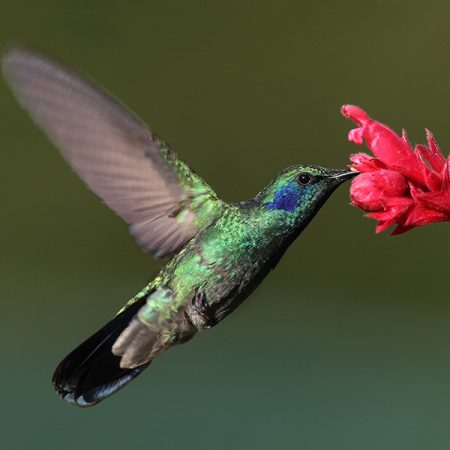
The rapid extinction of dinosaurs 65 million years ago gave rise to a stunning variety of bird species over the next few million years, according to Florida State University researchers.
A study published in the journal Nature in coordination with Yale University resolved the bird family tree, something that has never been accomplished by scientists. It shows that all land birds diverged early on from a group that includes vultures and hawks, and indeed that all birds evolved from a group of dinosaurs that included the Tyrannosaurus rex and Velociraptor.
“These birds just diversified rapidly after dinosaurs went extinct,” said Emily Moriarty Lemmon, assistant professor in the Department of Biological Science at FSU. “Now that these relationships have been identified, we can more accurately study how color vision, feather structure and many other bird traits have evolved through time.”
The researchers also showed that owls are closely related to toucans and hornbills and that falcons are closely related to parrots and songbirds. The study also confirmed that a nocturnal nightjar — a bird with long wings, short legs and very short bills — is related to the tiny and colorful hummingbird.
This is the first time scientists have been able to show a complete family tree for birds.
Birds are the only living descendants of dinosaurs. But until now, scientists really had no idea how quickly they had spun off into different species. In fact, after dinosaurs died out, more than 10,000 bird species evolved in only a few million years.

In addition to showing the relationships between land birds, researchers also found that it was very rare for early bird species to change between terrestrial and aquatic lifestyles. Researchers concluded that nearly all water-based birds, such as penguins, pelicans and gulls, shared a common ancestor.
Scientists were able to complete this family tree because of a genetic sampling technique developed by Alan and Emily Lemmon at FSU’s Center for Anchored Phylogenomics. The technique targets a few hundred key locations on each genome — there are thousands of genes in the full genome — that are present in all of the species and contain sufficient DNA sequence variation to uncover the relationships among organisms.
Past attempts to build a full family tree, or phylogeny, for birds have been only partially successful. Other scientists have attempted to do so by using the full genomic sequence for a few dozen birds, which is both time consuming and extremely expensive.
The Lemmons and their collaborators, in contrast, analyzed several hundred genes for four times the number of bird species at a fraction of the cost of the previous study and successfully uncovered the bird family tree.
“There is so much diversity in birds that you have to look at a large number of species to really get a clear picture,” said Alan Lemmon, associate professor of scientific computing.
In addition to the Lemmons, other authors on the study are Richard Prum, Daniel Field, and Jeffrey Townsend of Yale University, Jacob Berv of Cornell University and Alex Dornburg of the North Carolina Museum of Natural Sciences.
The research was supported by funding from the Cornell Lab of Ornithology, Yale University and the National Science Foundation.




